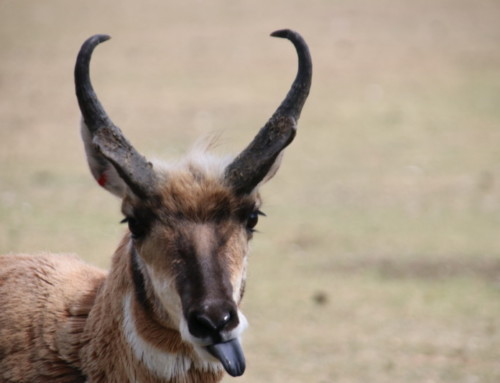Yes, Caribou are Reindeer. The Saskatoon Forestry Farm Zoo’s own Woodland Caribou are all Rangifer tarandus. Reindeer and Woodland Caribou are each one of several subspecies recognized by scientists. Reindeer usually refer to the semi-domesticated variety from Northern Europe and Asia. Woodland Caribou are a subspecies recognized by scientists as Rangifer tarandus caribou. They are found in the North American boreal forests of aspen, spruce and Jack Pine. As a group they are not as gregarious as the caribou found north of the boreal forest in the Arctic. Woodland Caribou form smaller herds and their migrations are not as extensive. Their search for 5 kg of food per day for each adult animal is more easily accomplished in the woodlands. They will eat sedges, grasses, other herbaceous plants (forbs), willow, birch leaves and lichens.
All caribou are members of the Cervidae Family (deer) and part of the Order Artiodactyla (even-toed hoofed animals). They grow antlers every year. Caribou characteristically have flatter antlers than other members of the deer family, with many short points or tines. Females or cows also grow antlers, the only deer species where this occurs. Female antlers are smaller (about the size of those of three-year old bulls) and are retained until after their single calf is born in the spring. Since bulls drop their antlers before the cows, this allows the pregnant females to defend their food sources in the sparse early spring growth and, thus, maintain optimum nutrition. Among Woodland Caribou, up to 40% of the cows do not grow antlers. Females of a herd will give birth within a few days of each other. The calves are mobile within a very short time and able to move with the herd in a day or so.
Bulls average 1.30 meters at the shoulder and average 110 kg. Some Woodland Caribou bulls in the B. C. herds can weigh up to 320 kg. Caribou are uniquely adapted to living in the harsh far northern conditions that they inhabit. Caribou are good swimmers. The hollow hairs of their coats keep them warm in Arctic temperatures. They walk on what would be the 3rd and 4th toes. There are small hoofs on either side of each foot called dewclaws. This helps spread the surface area of each foot for surer walking on ice and snow. Their hoofs are also useful for digging in the snow to find food. Their feet make a clicking noise as they walk or run due to the tendons slipping over the bones – much like when people crack their knuckles.
Woodland Caribou are considered a threatened species according to the Species At Risk Act, with some herds being extirpated. Loss of habitat is the main problem.
General Caribou Information
Although there is extensive cross-breeding between herds, there are several other recognized subspecies of Caribou across northern Canada, Alaska and Greenland. All are under severe stress from climate change and habitat loss. Human progress into the remote areas occupied by the caribou is causing habitat fragmentation. Increased roads, trails, and seismic lines allow predators easier access. The decreasing amount of Arctic ice is a problem for the herds that travel from island to island during their migration. At one time, Caribou were found over 80% of the country and were noticeable enough that their image is on our quarter. Now the numbers of many herds have decreased by 90%!
Caribou are ruminants, as are most of the Artiodactyla. Their specialized digestive system allows them to use plant cellulose for energy. Bacteria and protozoa in their rumen (a part of their digestive system) ferment the fodder, breaking it down and allowing the nutrients to be absorbed.
http://www.wwf.ca/conservation/arctic/wildlife/caribou/?gclid=CIe1qJzDhdACFQgPaQodL9sAcQ
http://us1.campaign-archive1.com/?u=87372265bba32227e01197dd8&id=c75aa002b9&e=9900bc679b
http://www.pc.gc.ca/eng/nature/eep-sar/itm3/eep-sar3caribou.aspx

